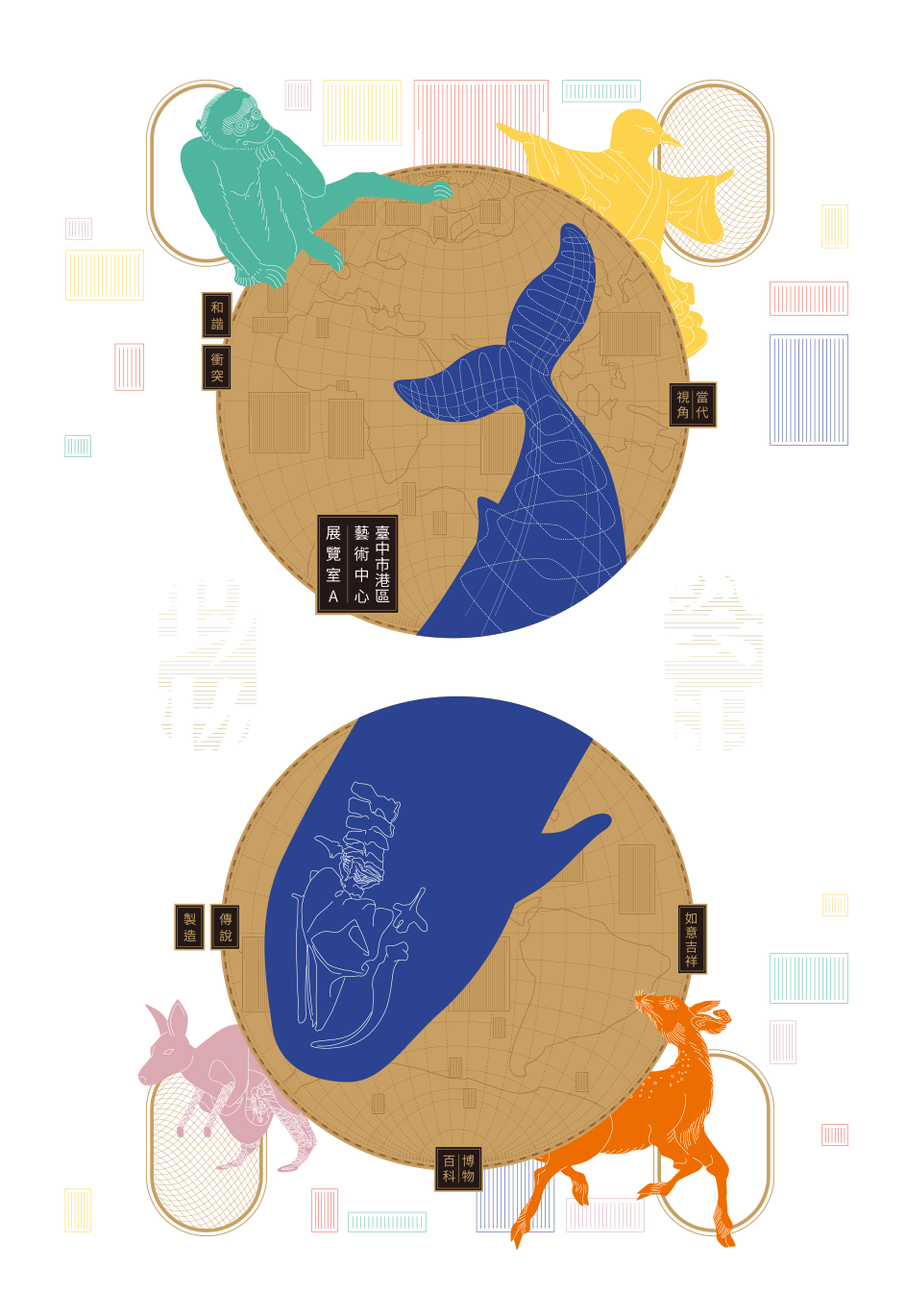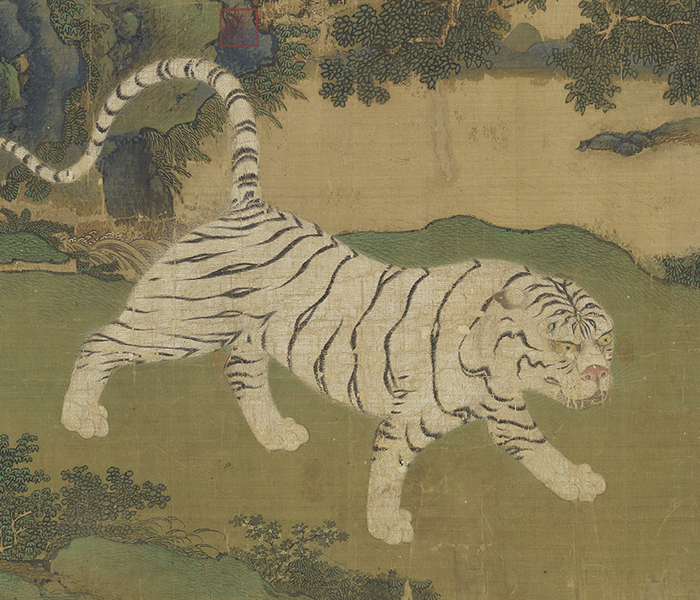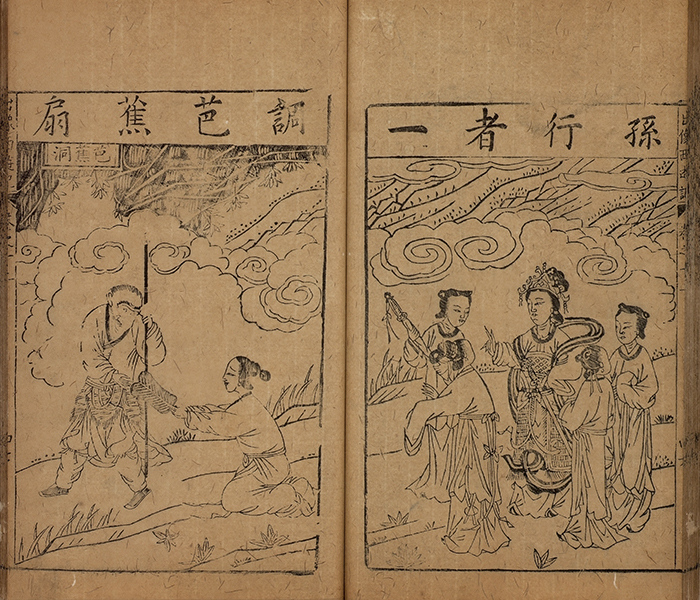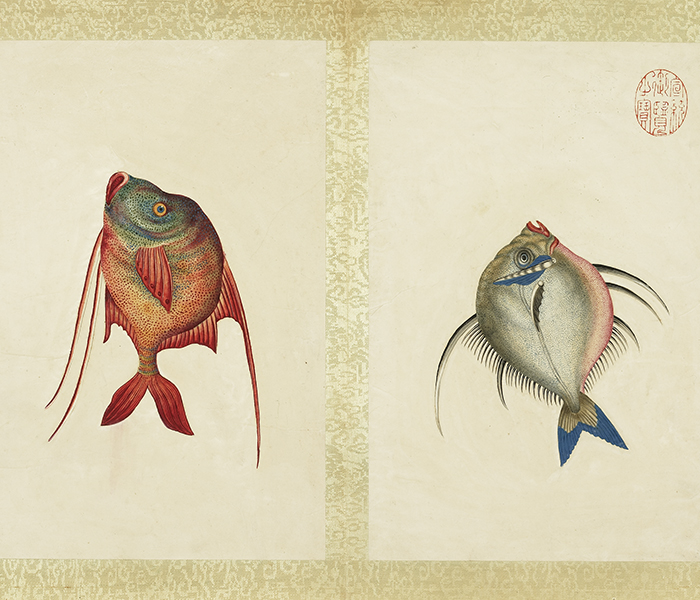Tsou-Yü
- Ming dynasty, Annoymous
- Hand scroll, ink and colors on silk, 51.8cm x 124.8cm
- Facsimile
According to a legend, in the fall of 1404, a tsou-yü appeared in the fief of the Duke of Chou (Chu Su) near the Shen-hou Mountain. Chu Su captured the precious animal and presented it to the Ming emperor Chengzu (1360-1424). This painting depicts the tsou-yü from the Shen-hou Mountain, a variety of rarely seen white tigers striped with black, and is believed to be a beast of righteousness who eats no living beings, and its virtue is said to be faith. Therefore, if a tsou-yü appears, it is a good omen of great importance, heralding the reign of a benevolent and faithful emperor. In this handscroll, the colors are beautiful with some outlines painted with gold ink. The dense pine needles with plants and flowers are accompanied by auspicious birds. This refined painting is probably the work of a court artist under the Yongle emperor in the early-15th century.

Vampyroteuthis infernalis
- Louis Bec
- 1987
Louis Bec (1936-2018) was both artist and scientist in the field of artificial life and 3D technologies. Describing himself as a zoosystematician, he partnered with the philosopher Vilém Flusser to develop a series of potential marine creatures that he endowed with chimerical and fictional characteristics. This extension of biological evolution and simulation of new life forms, focused on how evolution emerged from a unique search for new zoomorphic types and forms of communication between artificial and natural species. Bec’s computer graphic models and videos are accompanied by his online publication Zoosystémie.
The Journey to the West
- Ming dynasty (1368-1644), Written by Wu Chengen
- Imprint by the Shidetang Hall of Jinling, Wanli reign (1573-1620), 21cm (H) x 13.4cm (W)
- Facsimile
The book was printed by the Shidetang Hall of Jinling in 1592, and is considered the earliest version of the 100-chapter The Journey to the West. Only four copies are in existence today, including three in Japan and one in the National Palace Museum. The work features cross-page illustrations, with descriptive captions on top. The bold carvings and rugged lines are stylistic of the Jinling style of prints.
Illustrated Album of Sea Oddities
- Qing dynasty (1644-1911), Anonymous
- Album leaf, ink and colors on paper, 33cm (H) x 22cm (W)
- Facsimile
The artist(s) of this work are unknown. There are no inscriptions or other texts on it but a record seal of the reign of the Hsüan-t'ung Emperor (1908-1911) does appear. Composed of 16 leaves, the album was painted with an extraordinary variety of colors to depict unusual and exotic sea life. Some of them appear to be based on actual species found in nature, while others look as if they are imaginative constructions, though it requires further research. The wooden cover of the album is engraved with the characters for the "wu-ch'en" cyclical year. Recurring every 60 years, the possible years include 1748, 1808, and 1868. Further research is, again, required to date this work more precisely.

Anthropomorphic animals─Legend of White Snake
- Ming Hwa Yuan Arts & Cultural Group
- 2008-2010
Animals are ubiquitous presences in all aspects of popular culture – in books, movies, animated films, fables, fairy tales, television, comics, games, songs, toys, etc. They can take their natural form, or be transformed, for instance, into cartoon, fictional and/or mythical creatures. There are routinely anthropomorphized animals who are attributed human behavioral traits, such as the ability to speak, and human emotions.
Galaxy Adventure of the NPM Guardians
- National Palace Museum 2018
- Animation, 13 mins
Galaxy Adventure of the NPM Guardians utilizes the rare astronomical event of a syzygy of the Sun, Moon, Venus, Jupiter, Mercury, Mars, and Saturn as a backdrop. The animation describes how the main character, Kui Xing (Dubhe), is entrusted with leading a task force to track down and bring back his naughty fun-loving friends scattered across the vastness of the galaxy, in order to achieve the rare phenomenon of a five-planet syzygy. This animation represents the first production by the National Palace Museum to incorporate social media stamps, a rap theme song, and 3D imagery of artefacts from the Museum collections. The animation was the recipient of a 2018 Media & Technology MUSE Award from the American Alliance of Museums (AAM), as well as a Gold REMI Award from the 2018 WorldFest Houston International Independent Film Festival.

Zoomorphic Design
- Noah Duncan, Yeung Sai-Kit, Demetri Terzopoulos & Yu Lap-Fai
- Video, 7 mins
Zoomorphic shapes are man-made shapes that possess the form or appearance of an animal. They have desirable aesthetic properties, but are difficult to create using conventional modelling tools. The artists present a computational method for creating zoomorphic shapes by merging a man-made shape and an animal shape. The two shapes are deformed by combining several design factors, and the modeler can also adjust the weighting between these factors to control the final shape produced.
